|
German Ground Forces in
Italy
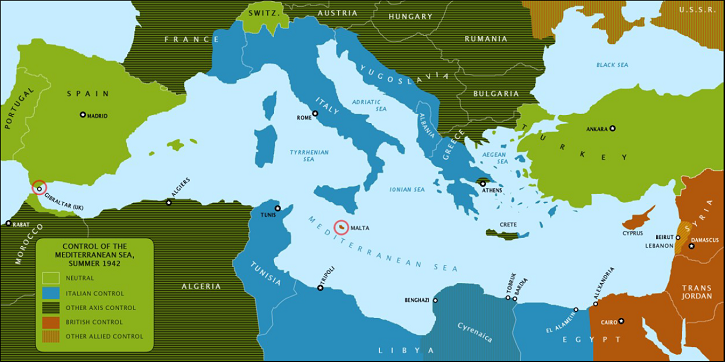 Background Background
In the first half of 1943, the German
strategic situation had changed dramatically from that of a year
previous. In the summer of 1942, German forces had secured the vital Don
Basin in the Soviet Union and had advanced into the Caucasus. In North
Africa, armoured forces were advancing on Cairo and threatening to push
the British entirely off the continent, securing the Suez Canal in the
process. In the space of twelve months, a number of catastrophes
dramatically altered the war situation:
-
British victory at El Alamein in October
1942 reversed the tide of the war in North Africa, and British
forces began a long pursuit of Axis forces, driving them back into
Tunisia
-
German offensive operations in southern
Russia ground to a halt at Stalingrad, where Soviet forces
stubbornly resisted, including a counter-offensive in November 1942
that cut Axis forces in the city off
-
Allied landings in North Africa in
November
 1942
took control of Morocco and Algeria, surrounding Axis forces in
Tunisia 1942
took control of Morocco and Algeria, surrounding Axis forces in
Tunisia
-
US heavy bomber forces began operating
in earnest over the continent in the last half of 1942
-
The German 6th Army was forced to
surrender at Stalingrad in February 1943
-
Another German army group was forced to
surrender at Tunis in May 1943
German refusal to reinforce Africa because
of the reluctance to deploy five or six extra divisions ultimately
resulted in a protracted campaign in Italy in which two dozen German
divisions were required.1
The Italian Campaign began in earnest on 10
July 1943 when US, British and Canadian forces landed on Sicily. German
forces on Sicily consisted of the XIV Panzer Corps, whose three
divisions stiffened the defence of the Italian 6th Army (the Italians
refused to let the German formations fight together as an independent
national corps), fighting an effective delaying action and withdrawal to
Messina where the
 bulk
of German forces were able to retreat to the mainland by 17 August 1943. bulk
of German forces were able to retreat to the mainland by 17 August 1943.
The Italian Campaign
As the Battle of Sicily progressed, the
Italian government re-assessed its strategic position. Losses in Africa
and Sicily had been high, and an Italian expeditionary corps in the
Soviet Union had also suffered high casualties. Benito Mussolini, the
Italian dictator, was arrested and Marshal Pietro Badoglio was placed in
charge of a government that had already entered into secret armistice
negotiations with the Allies.
On 15 August, anticipating Italy's
defection, Hitler formed the 10th Army, with two corps and component
divisions.
10th ARMY
LVI Corps
15th Panzergrenadier Division
29th Panzergrenadier Division
16th Panzer Division
26th Panzer Division
1st Parachute Division
XIV Panzer Corps
3rd Panzergrenadier Division
90th Panzergrenadier Division
2nd Parachute Division
16th Waffen-SS Assault Brigade "Reichsführer
SS"
Allied landings in southern Italy (in
Calabria on 3 September and Taranto and Salerno on 9 September)
precipitated Italy's capitulation. German forces in Italy expanded when
Army Group B relocated from southern Germany, to become Army Group C in
November 1943. Prior to this, German command in Italy had been
dangerously split between two headquarters (Rommel in the north and
Kesselring in the south), the first of three major mistakes Hitler made
during the campaign.2
Following the defection, German forces
seized control of Rome, provided security at ports and coastal areas of
northern Italy, and began construction of a number of defensive lines,
beginning with the Winter Line on which they hoped to resist south of
Rome until the spring of 1944.
With additional forces deployed to Italy,
the Germans held onto the Gustav Line on the Sangro and Garigliano
Rivers. The Allies, hampered by poor weather, undue caution and skilled
German resistance, only managed to advance 70 miles beyond Salerno, and
remained 100 miles south of Rome by the end of 1943.3
In January 1944 Allied landings at Anzio
prompted the Germans to activate the 14th Army in defence of the
beachhead. Hitler's second major mistake was intervening in the planning
for the German counter-attack at Anzio.4 Among Hitler's
edicts were sending inexperienced troops (of the Infantry Lehr Regiment)
into a night attack despite the protest of local commanders and
insistence on a creeping barrage for which there was not enough
ammunition.5 "Had the field commanders had their way," one
historian noted, "it is not inconceivable that the assault would have
been carried. Kesselring (theatre commander) and von Mackensen (14th
Army commander) were convinced that it would...."6
The 10th and 14th Armies continued to fight
side by side as the Allies overwhelmed the Hitler Line, took Rome, and
advanced to the Gothic (Green) Line.7 On 1 June 1944, Germany
had 27 divisions deployed to Italy and 25 more in the Balkans, about 18%
of all the divisions in the Army, Air Force, and Waffen-SS combined.
That commitment of forces to the Mediterranean was double what it had
been a year previously (about nine percent.)8 Hitler's final
mistake was not permitting German forces to withdraw in the closing
months of the war, ensuring their destruction once the Allies reached
the northern end of the Apennines. Lacking both fuel and permission to maneuver, the final Allied offensive in April 1945 was a crushing one.9
Missions of the German Forces
German forces in Italy had three main
missions: front-line combat against the Allies, coastal defence and
security against potential Allied landings north of the front, and
rear-area security in a particularly volatile war between various
Italian factions.
There was no active, armed resistance
movement to speak of in Italy until after the fall of the Mussolini's
regime. That fall did not come about due to an anti-Fascist movement,
but had been precipitated instead by the monarchy, elements of the Army,
and some elements within the Fascist Party leadership. When the King and
the Badoglio government fled Rome, a number of anti-Fascist parties
(including Socialists, Liberals, Christian Democrats and Communists)
coalesced into a National Liberation Committee (CLN). The CLN was not
recognized in the north of Italy, where there was a strong Communist
presence, and the Communists formed their own National Liberation
Committee of Upper Italy (CLNAI). Both the CLN and CLNAI became active
in German-occupied areas. Relations remained poor between the Badoglio
government and these committees until the King abdicated in the summer
of 1944 and a new government was formed.
Mussolini, in the meantime, formed an
Italian Social Republic (RSI) in the north, and equipped military and
security forces to wage war against the resistance movements. Nominally
an independent state allied to Germany, the Germans nonetheless used
their own military in northern Italy to maintain order and secure their
lines of communication. The internecine warfare in northern Italy was
vicious, and most German formations seem to have been implicated in war
crimes against the civil population. Examination of individual crimes
reveals many of these were reprisals in the wake of partisan actions, or
else rough military justice meted out to suspected partisans.10
German Army Divisions
The most basic component of the German Army
was the division. Several types of these served in Italy.
|
Infantry Divisions
There were 35 different mobilization
waves (Welle) from September 1939 to March 1945. Each
wave laid out a standard structure for each division created
during that wave. The tendency during the war was for manpower
to go down and firepower to go up. Type 1939 divisions created
before August 1942 were authorized 16,977 men divided into three
infantry regiments plus supporting units (artillery regiment,
reconnaissance battalion, engineer battalion, signals battalion,
horse-drawn and motorized supply columns, medical and veterinary
units, MP platoon and field post office). The "Schnell
Battalions" which combined anti-tank and reconnaissance
sub-units had those functions split out into separate divisional
sub-units.
Losses on the Eastern Front caused
new divisions from November 1943 (and existing divisions at that
time) to be organized as Type 1944 divisions, with 12,772
authorized men. The divisional reconnaissance battalions were
reorganized and redesignated as Füsilier Battalions, which were
organized identically to the battalions in the
infantry/grenadier regiments, possibly with additional bicycles
for slightly increased mobility.
In December 1944 the divisions were
again reorganized as Type 1945 divisions with further reductions
in manpower, though in practice most divisions were deficient in
manpower anyway, meaning few divisions reorganized in the final
weeks of the war to conform.11 |
 |
 |
In 1939 a number of Depot Divisions were
created to train replacement units in Germany. In October 1942, many of
these were redesignated Reserve Divisions and deployed as garrison
troops in occupied territories. In October 1944, with the occupied
territories having mostly been reclaimed by the Allies, many of these
Reserve Divisions were converted to full-blown Infantry Divisions.12
|
Mountain and Light Infantry (Jäger)
Divisions
The Type 1939 Mountain Division was similar
in organization to the standard infantry division, but with two mountain
regiments and support services appropriate to operating in alpine
terrain. Type 1942 Jäger Divisions were lightly armed, mobile infantry.
The 1944 Mountain Division was similar to the Infantry Division. It had
two Mountain Troop regiments of two battalions each, but a mountain
reconnaissance battalion (rather than a Füsilier Battalion, and equipped
with bicycles), an anti-tank battalion, and a mountain artillery
regiment. |
 |
|
Panzergrenadier
Divisions
In June 1943, the Motorized Infantry
Divisions of the German Army were redesignated as
Panzergrenadier Divisions. They were authorized 14,738 men,
organized into two motorized infantry regiments, a tank
battalion, motorized artillery regiment, armoured reconnaissance
unit, anti-tank, anti-aircraft and motorized engineer
battalions. The Type 1944 Panzergrenadier Division had 680 fewer
men (mostly in the support units) but greater firepower. In 1945
the Panzergrenadier Divisions were ordered to conform to the
establishment of the Type 1945 Panzer Divisions but it is
doubtful these reorganizations took place.13
Originally intended to supplement armoured corps (two panzer
divisions and a motorized infantry division), the Germans found
that the Panzergrenadier Divisions could operate much in the
same way as the panzer divisions, having more indirect firepower
and about 50% more infantry (three battalions per
panzergrenadier regiment as opposed to two).14 |
 |
|
Panzer Divisions
In September 1943 the existing
panzer divisions, using the Type 1941 establishment, were
reorganized as Type 1944 Panzer Divisions. The component units
included a single tank regiment of two battalions (often with a
full battalion of PzKpfw V "Panther" types and the other with
PzKpfw IV), two Panzergrenadier regiments (each of two
battalions, one officially equipped with armoured personnel
carriers (SPW halftracks) and the other with trucks), an
armoured artillery regiment, motorized anti-aircraft unit,
armoured reconnaissance, anti-tank and engineer battalions.15
The number of tanks in a panzer
division declined sharply during the war, from an establishment
of 328 per division in 1939 to 165 in 1943, even without
accounting for mechanical breakdowns and routine shortages of
vehicles. Perhaps the most signficant change in the 1944 Panzer
Division was the introduction of a battalion of PzKpfw V
"Panther" tanks. The Type 1945 Panzer Division authorized just 54
tanks, though it is doubtful existing divisions ever reorganized
that late in the war. |
 |
German Ground Formations in Italy
|
Category |
Formation/Unit |
Shoulder-strap
Device(s) |
Notes |
|
Army Group
 |
Army Group B |
G
|
First created in
1939, renamed Army Group Center before the invasion of the
Soviet Union. Reorganized in July 1942 from Army Group
Command South, relocated to Germany after the defeat at
Stalingrad in Febraury 1943. Reinstated July 1943 at Munich
under Field Marshal Rommel. Transferred to northern Italy in
August 1943. Disappeared under new command structure in
November 1943. (Later recreated in January 1944 in France). |
| Army Group C |
G |
Originally
mobilized in August 1939, served in France, transferred to
Germany after French capitulation and renamed Army Group
North for the invasion of the Soviet Union. A new Army Group
C was reorganized on 26 November 1943 as part of a new
command structure in Italy. Army Group C was the first major
German formation to surrender at war's end, capitulating
without the approval of the Armed Forces High Command (OKW)
on 29 April 1945. |
| Army Group Liguria |
- |
Alternate
designation for Ligurian Army between November 1944 and
February 1945 with 14th Army under command. |
|
Army
 |
10th Army |
A/10 |
Brief service in
Poland in 1939 before being transferred west and renamed the
6th Army. A new 10th Army was created on 15 August 1943 in
Italy. Surrendered on 2 May 1945. |
| 14th Army |
A/14 |
Brief service in
Poland in 1939 before being transferred west and renamed the
12th Army. A new 14th Army was created on 18 November 1943
in northern Italy. Following the Allied landings at
Anzio-Nettuno, the 14th Army took over defence of the
beachhead, and following the Allied breakout and capture of
Rome, fought alongside 10th Army during the defensive
campaign that followed. Surrendered on 2 May 1945. |
| Army Detachment Von Zangen |
- |
Established 17
March 1944 in northern Italy, became Ligurian Army on 31
July 1944. |
| Ligurian Army |
- |
Redesignation of
Army Detachment Von Zangen on 31 July 1944. Also known
between November 1944 and February 1945 as Army Group
Liguria. |
|
Corps
 |
I Fallschirm |
1 |
1st Parachute Corps was established in January 1944 and
instead of its intended purpose of commanding parachute
divisions in the 1st Parachute Army, went instead under the
command of 14th Army to Anzio. The corps remained in Italy
for the rest of the war. |
| LI |
51 |
Created in 1940 and destroyed on Eastern Front. Recreated as
51st Mountain Corps in northern Italy in September 1943. |
| LXXIII |
73 |
Established 25 November 1944 in northern Italy on the
Venetian coast. |
| LXXV |
75 |
Created 15
January 1944, remained on Ligurian coast. Included Fortress
Brigade 135 formed in April 1944, which oversaw the
garrisons (five Fortress Battalions - 902, 905, 906, 907,
908) of Corsica and Elba. In early 1945 command passed to
the Ligurian Army. |
| LXXXVII |
87 |
Established in
November 1942 in France, moved to the Ligurian coast in the
summer of 1943. |
| LXXXXVII |
97 |
Created 28
September 1944, by renaming the Adriatic Coast Operational
Zone Command. |
| XIV Panzer
Corps |
14 |
Originally XVI Corps, renamed
Panzer Corps in 1942 and stationed in France. Moved to Italy in June
1943. |
| LXXVI
Panzer Corps |
76 |
Renaming of LXXVI Corps in July
1943, deployed to Italy in August 1943. |
|
Infantry
Division
 |
34th Infantry Division |
D/34 |
|
| 44th Infantry Division |
Stalingrad Cross |
Stalingrad
Division |
| 65th Infantry Division |
D/65 |
|
| 71st Infantry Division |
D/71 |
Stalingrad
Division |
| 92nd Infantry Division |
D/92 |
Fought briefly
only as battle groups in Alban Hills, broken up to reinforce
the 362nd Infantry Division. |
| 94th Infantry Division |
D/94 |
Stalingrad
Division |
| 98th Infantry Division |
D/98 |
|
| 148th Infantry Division |
D/148 |
|
| 155th Infantry Division |
D/155 |
Field Training
Division established Nov 1944, redesignated as Infantry
Division January 1945 |
| 157th Reserve Division |
D/157 |
Reserve
Division, redesignated on 1 October 1944 to become 157th
Gebirgsjäger Division. |
| 162nd (Turkestan) Infantry Division |
D/162 |
|
| 232nd Static Division |
D/232 |
Created on 26
June 1944 as a Static Division. |
| 237th Infantry Division |
D/237 |
|
| 278th Infantry Division |
D/278 |
|
| 305th Infantry Division |
D/305 |
Stalingrad
Division |
| 334th Infantry Division |
D/334 |
Tunis Division |
| 356th Infantry Division |
D/356 |
|
| 362nd Infantry Division |
D/362 |
|
| 715th Infantry Division |
D/715 |
|
|
Jäger
Division
 |
42nd Jäger
Division |
D/42 |
|
| 114th
Jäger Division |
D/114 |
|
|
Mountain
Troop
Division
 |
5th
Gebirgsjäger Division |
D/5 |
|
| 8th
Gebirgsjäger Division |
D/8 |
Redesignation of 157th
Gebirgsjäger Division in February 1945. |
| 157th
Gebirgsjäger Division |
D/157 |
Created from 157th Reserve
Division on 1 October 1944. |
| 188th
Gebirgsjäger Division |
D/188 |
reserve? |
Panzer
Division
 |
16th
Panzer Division |
D/16 |
Stalingrad Division |
| 26th
Panzer Division |
D/26 |
|
Panzer
Grenadier
Division
 |
3rd
Panzergrenadier Division |
D/3 |
Stalingrad Division |
| 15th
Panzergrenadier Division |
D/15 |
Tunis Division |
| 29th
Panzergrenadier Division |
D/29 |
Stalingrad Division |
| 90th
Panzergrenadier Division |
D/90 |
Tunis Division |
German Air Force Divisions
The major personalities of the Nazi regime
dedicated much of their time promoting their own personal interests, and
in a unique representation of the internecine bureaucracy of the Third
Reich, extended their power bases through the creation of their own
armed forces. Hermann Göring was an avid participant in this bizarre
proliferation of military units. As Secretary of the Interior and head
of the Prussian police he created several battalions of police under the
umbrella of his own name, Landespolizeigrupppe 'General Göring.'
On the creation of the Luftwaffe (German Air Force) in 1935, the
unit became Regiment 'General Göring.' The first parachute
battalion split from the regiment before the war, and a similar
parachute unit raised by the Army was transferred to Air Force control
in 1939. The parachute units proved their worth in the campaign in the
West in 1940, and expanded to three battalions by the time of the
invasion of Crete in May 1941. Losses were so heavy on Crete that
large-scale airborne drops were not again attempted (three small
operations would be carried out in Sicily in 1943, Leros in 1943, and
the Ardennes in 1944).
In the meantime, Air Force ground forces
were expanded and fought in the Soviet Union and North Africa. The 1st
Parachute Division was created in early 1943 by renaming the earlier
Flieger Division 7. A 2nd Parachute Division was created in France
at the same time, later serving around Rome just before the defection,
and leaving for the East while donating a cadre to the newly formed 4th
Parachute Division. A 3rd Parachute Division formed in France in October
1943 as well. Additional Parachute Divisions were created as the war
went on, with few actual parachute trained men employed within: 5th
Parachute Division formed in France in March 1944, 6th in France in June
1944, 7th in October 1944 from the remnants of the 6th which was
destroyed in combat in Normandy, the 8th formed in early 1945 in
northern Germany, the 9th in December 1944 from various "combed-out"
elements of the German Air Force, and employed on the Eastern Front. The
10th Parachute Division was created from elements of the 1st and 4th
Divisions in March 1945, and employed in Moravia against the Red Army.
The Regiment 'General Göring' meanwhile
served in France in 1940, by this time mainly a heavy anti-aircraft
unit, and distinguished itself early in the Russian Campaign. It was
expanded to a brigade in the summer of 1942, to include two infantry
regiments and an anti-aircraft regiment. In January 1943 the brigade
became Panzergrenadier Division 'Hermann Göring' and shortly after
redesignated a full Panzer Division. The division served in Tunisia and
those elements not destroyed in combat there were captured in the fall
of Tunis in May 1943. Those elements of the division which had not
shipped to Africa were expanded to rebuild the division, and it fought
in Sicily and southern Italy.
A number of regular infantry divisions,
known as Luftwaffe Field Divisions, were also created beginning in 1942,
serving in Russia and later Normandy. Eventually 22 such divisions
served in combat. One division, the 19th, was renamed to become the 19th
Assault Division and served briefly in Italy.16
German Air Force Ground Divisions in
Italy
|
Category |
Formation/Unit |
Notes |
|
Assault Division |
19th Assault Division |
Established
on 1 June 1944 by renaming Luftwaffe Field Division 19 and
redeploying from coastal duty in the Netherlands to Italy.
Fought in heavy rearguard battles in Central Italy for
approximately four weeks, during which the division was
destroyed. Officially disbanded 15 August 1944, and remnants
dispersed to other formations in Denmark |
|
Parachute Panzer Division |
Parachute Panzer Division
"Hermann Göring" |
Tunis Division |
|
Parachute Division |
1st Parachute Division |
Fought in Sicily in the summer
of 1943, then on the Adriatic coast, notably at Ortona and
Orsogna in late 1943. Famously defended Cassino in the
spring of 1944, and after the fall of Monte Cassino,
remained part of the 10th Army, seeing action at Rimini and
surrendering in April 1945 at Imola. |
|
2nd Parachute Division |
Created in France in February
1943. Located in Rhone Valley until fall of Mussolini, moved
to Italy and moved on Rome after Italian defection. Brief
fighting with Italian units in Rome. To coastal defence at
Anzio, and one battalion seized the island of Leros in
September 1943. Moved to the Reinhard Line in November 1943.
Moved to Eastern Front in November 1943 after heavy losses. |
|
4th Parachute Division |
Formed from elements of 2nd
Parachute Division near Perugia, as well as former members
of Italian Nembo and Folgore Airborne Divisions. After the
Anzio breakout, continued to see action at Florence, Rimini
and Bologna, surrendered in April 1945 near Vicenza. |
Waffen-SS Divisions
The SS had its roots as security forces in
the earliest days of the Nazi movement. By the outbreak of the Second
World War, the SS was a blanket organization to which the Secret State
Police (Gestapo), national security services, concentration camp staffs
and, after the Russian Campaign began, extermination squads (Einsatzgruppen)
belonged. Separate, for the most part, from these structures was the
Waffen-SS. Similar to the leader of the Air Force, after whom the
Hermann Göring units were named, the leader of the SS desired to
have his own private military force for purposes of prestige and
political power. From the modest beginnings of volunteer battalions in
Poland and France, the Waffen-SS eventually expanded to number 38 combat
divisions, a number of which were division-sized in name only, and with
the exception of most of the first 12 divisions, included high numbers
of foreign volunteers from across Europe.17
Only one of the Waffen-SS divisions served
in Italy. The 16th SS Division was formed from a headquarters security
detachment and expanded to brigade status, seeing anti-partisan action
on Corsica in 1943. The brigade moved to Slovenia and was expanded to
division status in October 1943 under the designation 16th SS
Panzergrenadier Division "Reichsführer-SS." One of the division's
regiments and an anti-aircraft battalion saw action at Anzio while the
remainder of the division fought in Hungary. The division assembled en
masse at Grosseto in Italy in May 1944, joining the defensive battles
along the western coast reaching Carrera by August and engaging in
anti-partisan activities in which hundreds of Italian civilians were
killed. The division departed Italy for Hungary in early 1945.18
After the defection by Italy, there were
800,000 disarmed Italian soldiers in Italy, and another 250,000 interned
by the Germans. Calls for volunteers for the Waffen-SS, succeeded in
attacting 15,000 volunteers (many inspired by the rescue of Mussolini by
SS commandos) in November 1943, many of whom had served on the Eastern
Front with the Italian Army. One unit mustered at Munsingen following
the rescue of Mussolini, termed the Italienische Freiwilliger Verband
and soon after went to northern Italy as the Italian Volunteer
Legion. A second unit formed at Debica in Poland to become the
SS-Battalion Debica, which included Italian veterans of the Lombardia
armoured division and Julia mountain division. The 1st
Sturmbrigade Italienische Freiwilligen Legion was created in January
1944. Soldiers of the unit referred to themselves as Prima Brigata
d'Assalto della Legione SS Italiana. The brigade fought hard at
Anzio, earning the right to wear black collar and rank insignia of the
German formations of the Waffen-SS. In September 1944 the unit was
renamed again to become Waffen-Grenadier Brigade der SS (italienische
Nr. 1), and in March 1945 expanded on paper to divisional size. The
29th SS Waffen-Grenadier Division (1st Russian) was disbanded and the
number reallocated to the expanded brigade, becoming 29th SS Waffen-Grenadier
Division (1st Italian).19
While the 1st SS Panzer Division "Leibstandarte
Adolf HItler" was briefly deployed to Italy (with an organic battalion
of 27 Tiger tanks) it saw no action there and redeployed to the Eastern
Front en masse.
Waffen-SS Divisions in Italy
|
Category |
Formation/Unit |
Notes |
|
Panzer Grenadier |
16. SS-Panzergrenadier Division
"Reichsführer SS" |
Established by expanding a
headquarters security detachment to brigade strength, served
on Corsica and later moved to Italy. |
|
Infantry |
29. Waffen-Grenadier Division
der SS (italienische Nr. 1) |
Due to the byzantine and
ever-evolving racial polices of the Nazis in the Second
World War, the term "Waffen-Grenadier" reflected the fact
that soldiers in the division were not German nationals but
instead foreign volunteers. The division was probably in
name only, and was granted very late in the war as an
umbrella term to a number of Italian volunteer organizations
that were already fighting in widely dispersed areas - with
some also seeing action against Allied front line units.20 |

CLICK TO ENLARGE
Divisional
Profiles
|
|
Army Divisions
|
34th Infantry
Division
34.
Infanterie Division |
Main Combat
Units
|
Type |
Designations |
Notes |
|
Infantry Regiment |
80, 107, 253 |
Renamed Grenadier Oct
1943 |
|
Füsilier Battalion
(1943-45) |
34 |
redesignation of Recon
Bn 1 Sep 1943 |
|
Artillery Regiment |
34 |
3 battalions, + I./AR 70 |
|
Reconnaissance Battalion
(1939-43) |
34 |
Aug 1939 to Sep 1943 |
|
Pioneer
Battalion |
34 |
divisional engineers |
|
Anti-tank Battalion |
34 |
third FlaK company added
Nov 1943 |
|
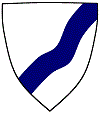 |
Created: 1 April
1936
Military District: XII
Early service: Russia
To Italy: Jun 1944
Fate: Surrendered April 1945 |
Raised 1936,
fought in Luxembourg and France in 1940, moved into Russia
in June 1941. Moved to Genoa in June 1944 after extensive
combat in the East. After coastal protection duty, moved to
defensive positions in August 1944, and
surrendered in April 1945 to the Americans west of Como.
Artillery
Regiment 34 had only three battalions, a fourth battery from
Artillery Regiment 70 also formed part of the order of
battle. A postwar
assessment of German ground forces in Italy by staff officer
Ludwig Graf von Ingelheim noted the division had not
participated in significant operations in Italy and
therefore wasn't assessed. |
 |
|
44th
Reichsgrenadier
Division
"Hoch-und Deutschmeister"
44.
Reichsgrenadier Division
'Hoch und Deutschmeister' |
Main Combat
Units
|
Type |
Designations |
Notes |
|
Grenadier Regiment |
131, 132, 134 |
Before Oct 1943,
designated as Infantry Regiments |
|
Artillery Regiment |
96 |
Rebuilt in Belgium on 1
Apr 1943 from artillery elements
of reinforced Grenadier Regiments 887 and 888 as
well
as a battalion of Artillery Regiment 362. |
|
Reconnaissance Battalion |
44 |
Created April 1943 in
Belgium with four squadrons. |
|
Pioneer
Battalion |
80 |
divisional engineers |
|
Anti-tank Battalion |
46 |
Rebuilt March 1943 in
Belgium. |
|
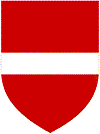 |
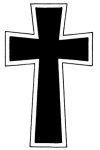 |
|
1938-43 |
1943-45 |
|
Created: 1 Apr
1938
Military District: XVII
Early service: Poland, France, Russia, destroyed Stalingrad
Jan 1943
Recreated: 1 Jun 1943
To Italy: July 1943
Fate: moved to Hungary in early 1945, managed to surrender
to US units. |
Original
division raised in Vienna, based on the Austrian 4th
Infantry Regiment "Hoch-und-Deutschmeister." Served well in
Poland in 1939, suffered heavy losses in France in 1940. Ten
months occupation duty at La Rochelle, then formed part of
Panzer Group 1 in southern Russia, and in 1942 the 6th Army,
with whom it was destroyed at Stalingrad.
A new division was
raised in Austria from the 44th Infantry Division with
divisional units remustered in Belgium. By order of Hitler,
the division was named "Reichsgrenadier Division Hoch und
Deutschmeister." The division went to north Italy, helped disarm
Italian units after the defection, and carried out
anti-partisan duties before moving to the front south of
Rome. Fought on the Sangro, the Rapido, and at Cassino. Held
positions on the Tiber and in the Apennines, brief rest in
November 1944 and then sent to Hungary where it retreated
from Red Army units, managing to surrender to American units
in May 1945.
A special
shoulder strap device was adopted by the divisional staff as
well as Grenadier Regiment 134 to commemorate the division's
service with 6th Army. The cross was of a type worn by the
Teutonic Knights, with a German national emblem and
"Stalingrad" scroll added. The Stalingrad Cross was also
adopted as a divisional vehicle insignia.21
The postwar
assessment by von Ingelheim noted the
division kept a nine-battalion structure for the infantry
regiments, but was nonetheless considered a "bad division."22 |
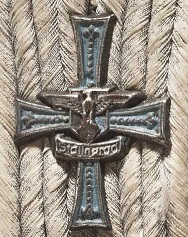 |
|
65th Infantry
Division
65.
Infanterie Division |
Main Combat
Units
|
Type |
Designations |
Notes |
|
Infantry Regiment
(1942-44) |
145, 146 |
Renamed Grenadier late
1942 |
|
Grenadier Regiment
(1944-45) |
145, 146, 147 |
Reorganization as 1944
Type Division |
|
Fusilier Battalion |
65 |
Reorg of Recon Battalion
Nov 1943 |
|
Artillery Regiment |
165 |
four battalions |
|
Reconnaissance Battalion |
165 |
Jul 1943 to Nov 1943 |
|
Pioneer
Battalion |
165 |
divisional engineers |
|
Anti-Tank and
Reconnaissance Battalion |
165 |
Feb to Jul 1943 |
|
Schnell Battalion |
165 |
Feb 1943 to Jul 1943 |
|
Anti-tank Battalion |
165 |
Jul 1943 |
|
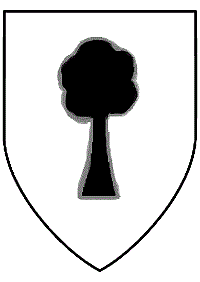 |
 |
 |
|
1942-43 |
late 1943 |
1944-45 |
|
Created: 7 Jul
1942
Military District: XII
Early service: Coastal defence NW Europe
To Italy: Sep 1943
Fate: Destroyed Apr 1945 |
A more
detailed history of the 65th Infantry Division can be found
here. Formed for coastal
defence, the division was scheduled to go to the Eastern
Front when Italy defected. The division saw extensive combat
service on the Sangro, at Anzio, and in the retreat north
following the fall of Rome. The division saw action at
Florence, the Futa Pass and Bologna before surrendering near
the Po River in April 1945. Von Ingelheim rated the 65th as
"one of the good infantry divisions."22 |
|
|
71st Infantry
Division
71. Infanterie Division |
Main Combat
Units
|
Type |
Designations |
Notes |
|
Grenadier Regiment
(1942-45) |
191, 194, 211 |
Originally Infantry
Regiments, renamed Oct 1942 |
|
Füsilier Battalion |
171 |
Reorg of Recon Battalion
Nov 1943 |
|
Artillery Regiment |
171 |
|
|
Reconnaissance Battalion |
171 |
to November 1943 |
|
Pioneer
Battalion |
171 |
divisional engineers |
|
Anti-tank Battalion |
171 |
|
|
 |
Created: 25 Aug
1939
Military District: XI
Early service: France, Russia, destroyed at Stalingrad Feb
1943
Rebuilt: Spring 1943 Yugoslavia
To Italy: spring 1944
Fate: Surrendered to British May 1945. |
Participation in the French and
Russian campaigns. Destroyed in the fighting around
Stalingrad. Rebuilt in spring 1943 in Yugoslavia, used in
coastal defence and anti-partisan operations in northern
Italy following the defection of Italy. Moved to the front
line in Italy in the spring of 1944. Division suffered major
losses in the May Offensive, heavy combat with New Zealand
troops at Cassino. Defensive battles until September 1944,
served on Gothic Line.23 Fought in Hungary in early 1945 and
ended war at Carinthia, surrendered to British. The
division's combat value was described as "average" by
von Ingelheim's post-war assessent.22 |
 |
|
94th Infantry
Division
94. Infanterie Division |
Main Combat
Units
|
Type |
Designations |
Notes |
|
Grenadier Regiment
(1942-45) |
267, 274, 276 |
|
|
Artillery Regiment |
194 |
|
|
Reconnaissance Battalion |
194 |
Originally bicycle
battalion, changed to Recon Apr 1943.
Never reorganized as Fusilier Battalion |
|
Pioneer
Battalion |
194 |
divisional engineers |
|
Schnell Battalion (1942) |
194 |
Destroyed at Stalingrad |
|
Anti-tank Battalion
(1944) |
194 |
Created summer 1943 with
three companies |
|

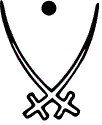
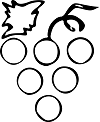 |
Created: 18 Sep
1939
Military District: IV
Early service: France, Russia, destroyed Stalingrad Feb 1942
Recreated: 1 Mar 1943
To Italy: Aug 1943
Fate: destroyed at Cassino May 1944, reconstituted and
surrendered to the Americans in April 1945. |
Created as
part of the 5th Mobilization Wave. Originally outfitted with
Czech equipment. Occupied positions on western border,
entered French Campaign on 27 May 1940. Moved to Russia in
July 1941, fought at Stalingrad where it was destroyed in
the winter of 1942/43. The division was recreated in March
1943, moved to Italy in August for coastal duty at Genoa,
and after reorganizing as a Type 1944 division, went into
action west of Cassino where it was wiped out again. The
remnants were used to reinforce the 305th Infantry Division
in July 1944. The division was recreated a second time in
August 1944 using troops from Shadow Division Silesia,
joined the retreat over the Arezzo, and from December 1944
to April 1945 fought in defensive battles on the Reno River
south of Bologna. The division went into captivity in April.
Rated as "average" by von Ingelheim's post-war assessment.22 |
 |
|
98th Infantry
Division
98. Infanterie Division |
Main Combat
Units
|
Type |
Designations |
Notes |
|
Grenadier Regiment
(1944-45) |
117, 289, 290 |
Regiments reformed in
June 1944
117 renamed "Grenadier Lehr Regiment 117" Oct 1944 |
|
Fusilier Battalion |
98 |
|
|
Artillery Regiment |
198 |
|
|
Pioneer
Battalion |
198 |
divisional engineers |
|
Anti-tank Battalion |
198 |
Recreated in Crotia with
three companies |
|
  |
Created: 18 Sep
1939
Military District: XIII
Early service: France, Russia, destroyed Sevastopol May 1944
Recreated: June 1944, Croatia
To Italy: Jul 1944
Fate: Surrendered April 1945 |
Created as
part of the 5th Mobilization Wave in 1939. Served on western
border and then in French Campaign. Granted leave August
1940 to February 1941, then garrison duty in France and into
the Russian Campaign, originally as OKH reserve. Fought at
Moscow, then defensive fighting. In April and May 1943 used
for anti-partisan duties at Bryansk. To Kuban bridgehead in
the summer of 1943 (less one of its regiments as Grenadier
Regiment 289 was dissolved), then heavy defensive fighting
at Kerch. Grenadier Regiment 289 reinstated March 1944,
division withdrew to Sevastopol and was destroyed there in
May 1944.
The division was recreated in
Croatia in June 1944 from surviving remnants of the division
and staff from 387th Infantry Division which was smashed and
dissolved in the spring of 1944. Moved to Italy in July 1944
for coastal duties at Ravenna. Fought at Rimini in August
and September 1944, retreated through Appenines to Senio and
defensive fighting there from January 1945 to April.
Retreated across the Po and into captivity. |
 |
|
148th Infantry
Division
148. Infanterie Division |
Main Combat
Units
|
Type |
Designations |
Notes |
|
Grenadier Regiment
(1944-45) |
281, 285, 286 |
|
|
Fusilier Battalion
(1944-45) |
148 |
|
|
Artillery Regiment
(1944-45) |
1048 |
|
|
Pioneer
Battalion (1944-45) |
1048 |
divisional engineers |
|
Anti-tank Battalion
(1944-45) |
1048 |
|
|
  
variations of divisional sign |
Created: 1 Oct
1942
Redesignated: 18 Sep 1944
Military District: VIII
Early service: none
To Italy: Sep 1944
Fate: Surrendered to Americans. |
148th Reserve
Division reorganized at Metz in December 1942. Transferred
to Silesia and in May 1943 to Toulouse, then again in
November 1943 to Nice. Guarded mountain passes between Italy
and France. On 2 July 1944 transferred to the Field Army.
148th Infantry Division created
in Liguria on 18 September 1944 by the renaming of 148th
Reserve Division. Served on coastal duty in northern Italy.
Ended war in American captivity. Did not participate
materially in the fighting and was not assessed by von
Ingelheim for that reason.22 |
|
|
155th Infantry
Division
155. Infanterie Division |
Main Combat
Units
|
Type |
Designations |
Notes |
|
Grenadier (Field
Training-) Regiment
(Nov 1944) |
1227, 1228, 1229 |
|
|
Grenadier Regiment
(Feb 1945) |
1227, 1228, 1229 |
renamed Feb 1945 |
|
Fusilier Battalion |
? |
|
|
Artillery (Field
Training) Battalion |
155 |
|
|
Artillery (Field
Training) Battalion |
155 |
|
|
Pioneer
(Field Training) Battalion |
1054 |
divisional engineers |
|
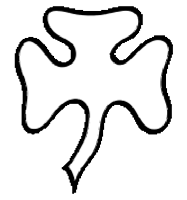 |
Created: Nov
1944 (as Field Training Division)
Military District: V
Early service: none
To Italy: created in Italy
Fate: Surrendered to Americans May 1945 |
Established
on 2 November 1944 in Italy as 155th Field Training
Division, using cadre from 20th Luftwaffe Sturm Division and
RAD (Labour service) personnel. On 11 February 1945 renamed
155th Infantry division. Surrendered to American units in
the Belluno area. |
|
|
157 Reserve
Division
157.
Reserve Division |
Main Combat
Units
|
Type |
Designations |
Notes |
|
Reserve Grenadier Regiment |
7, 157 |
|
|
Reserve Mountain Troop
Regiment |
1 |
Renamed in Oct 1944
Mountain Troop Regiment 296 |
|
Reserve Artillery Regiment |
7 |
|
|
Reserve Pioneer
Battalion |
7 |
divisional engineers |
|
 |
Created: 1
October 1942
Military District: VII
Early service: none
To Italy: summer 1943
Fate: Reclassified to Mountain Troop Division Sep 1944 |
Redesignation
of Division No. 157, originally a collection of replacement
units in Military District VII. Moved to the western Alps in
the summer of 1943, served on anti-partisan duties in Savoy.
Reserve Grenadier Regiment 7 dissolved in December 1943.
Reclassified in September 1944 to become 157th Mountain
Division. Reserve Mountain Troop Regiment 1 was redesignated
Mountain Troop Regiment 296, and Reserve Grenadier Regiment
157 was reclassified as Mountain Troop Regiment 297 in
October 1944. |
|
|
162nd
(Turkestan) Infantry
Division
162.
(Turkoman) Infanterie Division |
Main Combat
Units
|
Type |
Designations |
Notes |
|
Infantry Regiment |
303, 314, 329 |
329th regiment formed
Aug 1944 |
|
Artillery Regiment |
236 |
|
|
Reconnaissance Battalion |
236 |
Created 1 Jun 1943 with
3 squadrons, expanded to
four squadrons at end of 1944 |
|
Pioneer
Battalion |
936 |
divisional engineers |
|
Anti-tank Battalion |
236 |
two companies, third
company added Nov 1944 |
|
 |
Created: 1 Dec
1939
Military District: II
Early service: Russia
Withdrawn: May 1942
Recreated: 21 May 1943
To Italy: Oct 1932
Fate: Surrendered to British in Austria. |
Original
division was created in December 1939, served at Kalinin and
Rshev in December 1941, and withdrawn to Stettin in May
1942, intended as a training cadre for foreign volunteers.
Renamed in May 1943 to become 162nd (Turcoman) Infantry
Division. Division reformed from volunteer Turkmen recruited
from Soviet prisoners of war. Authorized strength of 10,000
volunteers and 8,000 German cadre.
Infantry
Regiment 303 created on 1 June 1943 in occupied Poland using
men of the 2nd Turkoman Legion and two Turkoman battalions,
then reduced from 3 battalions to 2 in June 1944. The 314th
Infantry Regiment was created simultaneously from the
Azerbaidzhan Legion and battalions, likewise reduced from 3
battalions to 2 in June 1944. On 6 September 1944 Infantry
Regiment 329 was created from Azerbaijani battalions and
joined the division. It doesn't appear these regiments
received the honorific "Grenadier" which replaced the term
"Infantry" in German regiments from October 1942.
Relocated to Italy in spring of
1944, moved to the front in May. According to von
Ingelheim's postwar
account, the division was unable to hold its positions and
was considered unreliable.22 Retreated to Austria at end of
war and surrendered to British. |
 |
|
232nd Infantry
Division
232. Infanterie Division |
Main Combat
Units
|
Type |
Designations |
Notes |
|
Grenadier Regiment |
1043, 1044, 1045 |
|
|
Fusilier Battalion |
232 |
|
|
Artillery Regiment |
232 |
|
|
Pioneer
Battalion |
232 |
divisional engineers |
|
Anti-tank Battalion |
232 |
|
|
 |
Created: 26 June
1944
Military District: IX
Early service: none
To Italy: August 1944
Fate: Surrendered near in Lombardy Brescia and Milan to
Americans. |
Formed as a
Bodenständige (Static) Division on 26 June 1944.
Coastal duty on Ligurian coast at Genoa as part of Armee
Ligurien. The Ligurian Army was created in July 1944
as a mixed German-Italian command, with authority over
Italian forces of the Italian Social Republic - a puppet
fascist state under Mussolini in northern Italy. This was
the second incarnation of an Italian fascist state, under
the Republican Fascist Party which had ostensibly reformed
into an anti-monarchist party. While officially called Army
Liguria, under command of Army Group C, between November
1944 to February 1945 the subordination of 14th Army meant
that the command was also sometimes referred to as an Army
Group. |
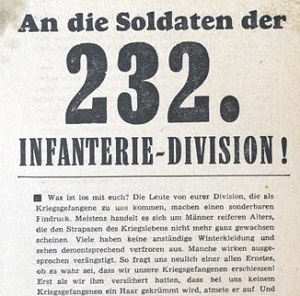 |
|
237th Infantry
Division
237. Infanterie Division |
Main Combat
Units
|
Type |
Designations |
Notes |
|
Grenadier Regiment |
1046, 1047, 1048 |
|
|
Fusilier Battalion |
237 |
|
|
Artillery Regiment |
237 |
|
|
Pioneer
Battalion |
237 |
divisional engineers |
|
Anti-tank Battalion |
237 |
|
|
unknown |
Created: 12 June
1944
Military District: IX
Early service: none
To Italy: August 1944
Fate: Surrendered to Yugoslavs May 1945 |
Created on 12
June 1944 as a division of the 27th Mobilization Wave using
units from the dissolved Shadow Division Bohemia. Division
assembled at the training ground at Milowitz (Milovice) in
Czechoslovakia. Performed coastal defence duty on the
Istrian Peninsula on the eastern side of the Adriatic Sea.
Surrendered to Yugoslav forces in May 1945 at Fiume. The end
of the war heralded a mass expulsion of ethnic Italians from
the region amounting to between 230,000 and 350,000 people
(including Croats and Slovenes fleeing communist rule of
Yugoslavia). |
 |
|
278th Infantry
Division
278.
Infanterie Division
&
278. Volksgrenadier Division |
Main Combat
Units
|
Type |
Designations |
Notes |
|
Grenadier Regiment |
992, 993, 994 |
|
|
Fusilier Battalion |
278 |
|
|
Artillery Regiment |
278 |
|
|
Pioneer
Battalion |
278 |
divisional engineers |
|
Anti-tank Battalion |
278 |
|
|
 |
Created: 17 Nov
1943
Military District: VIII
Early service: none
To Italy: Jan 1944
Fate: Surrendered May 1945 |
Originally
planned as part of the 10th Mobilization Wave to be stood up
on 22 May 1940. However, the fall of France was so rapid
that the order was cancelled on 22 July 1940. The division
was actually raised in November 1943 as part of the 22nd
Mobilization Wave. Raised in Italy around the staff of the
333rd Infantry Division which had disbanded after its
destruction in Russia.
Organized at
Padua-Ferrara-Bologna in
Italy in January 1944. Transferred to Istria at the end of
March 1944, and in May 1944 to Pescara. Forced to retreat to
Chienti in June after heavy fighting against Polish troops.
Heavy losses again at Ancona in July. Moved from the
Adriatic inland in August, heavy defensive fighting at San
Marino, and further retreats followed by fighting at the
Senio. Renamed in April to become 278th Volksgrenadier
Division. Heavy losses in final weeks of war, remnants
capitulated in May 1945 north of the Po.
Described in von Ingelheim's postwar account
as a weak division with only average combat value.22 |
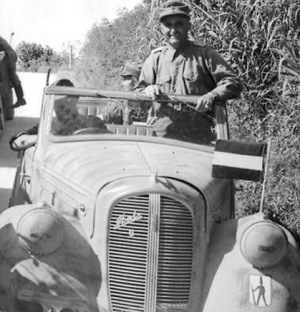 |
|
305th Infantry
Division
305. Infanterie Division |
Main Combat
Units
|
Type |
Designations |
Notes |
|
Grenadier Regiment
(1942-45) |
576, 577, 578 |
|
|
Fusilier Battalion |
305 |
(redesignation of Recon
Bn Jul 1943) |
|
Artillery Regiment |
305 |
|
|
Pioneer
Battalion |
305 |
divisional engineers |
|
Anti-tank Battalion |
305 |
Created summer 1943 with
3 companies |
|
 |
Created: 15 Dec
1940
Military District: V
Early service: Russia, destroyed at Stalingrad.
Recreated in France Feb 1943
To Italy: Aug 1943
Fate: Remnants surrendered Lake Garda May 1945. |
Created on 15
December 1940 as a Security Division of the 13th
Mobilization Wave at Ravensburg. Reclassified on 7 February
1942 as an assault division, and transferred to Eastern
Front in July 1942. Destroyed in January 1943 at Stalingrad.
Rebuilt in Brittany, France in February 1943 and deployed to
Italy in August 1943. Coastal duty at La Spezia, and entered
combat in October 1943. Constant action at Volturno, Pescara,
and Bologna. Ended the war north of Po at Lake Garda.
Von Ingelheim's postwar account mentioned the
division performed well and had proven itself in mountain
warfare.22 |
 |
|
334th Infantry
Division
334. Infanterie Division |
Main Combat
Units
|
Type |
Designations |
Notes |
|
Grenadier Regiment |
754, 755, 756 |
|
|
Fusilier Battalion |
334 |
Redesignation of Recon
Bn July 1943 |
|
Artillery Regiment |
334 |
|
|
Reconnaissance Battalion |
334 |
Recreated in France June
1943,
renamed in July to Fusilier Battalion |
|
Pioneer
Battalion |
334 |
divisional engineers |
|
Anti-tank Battalion |
334 |
recreated June 1943 with
AT company, AA company, StuG detachment |
|
|
Created: 25 Nov
1942
Military District: XIII
Early service: Africa
Captured in Tunisia May 1943
Recreated in France
To Italy: Oct 1943
Fate: Surrendered to Americans in Dolomites. |
Created in
November 1942, intended for service in Africa. Dispatched
from Naples in January 1943, surrendered at Tunis in May
1943. Original division had two Grenadier Regiments and a
Mountain Regiment, and as was standard in North Africa, all
units were motorized. Recreated with three Grenadier
Regiments.
Rebuilt in France in June using
divisional remnants, replacement units and staff of 80th
Infantry Division. Moved to Genoa in October 1943, then to
the Adriatic Front in January 1944. Retreated to Apennines,
positional warfare at Florence from July to October 1944,
then combat at Bologna and Faenza. Retreated across the Po
and into American captivity at the end of the war. Von
Ingelheim rated the division in his postwar survey as good
but average.22 |

Monument in Italy to German
334th Infantry
Division (with variant on divisional sign) and U.S. 34th
Infantry Division. resistenzatoscana.org website photo |
|
356th Infantry
Division
356. Infanterie Division |
Main Combat
Units
|
Type |
Designations |
Notes |
|
Grenadier Regiment |
869, 870, 871 |
|
|
Fusilier Battalion |
356 |
From 29 Sep 1943 |
|
Artillery Regiment |
356 |
|
|
Reconnaissance Battalion |
356 |
Jul 1943 to Sep 1943 |
|
Pioneer
Battalion |
356 |
divisional engineers |
|
Schnell Battalion |
356 |
Apr 1943 |
|
Anti-tank Battalion |
356 |
Jul 1943 |
|
 |
Created: 1 May
1943
Military District: IX
Early service: none
To Italy: Nov 1943
Fate: Surrendered to US in Austria |
Created on 1
May 1943 in southern France. Deployed to Italian Riviera,
served on Italian Riviera and Adriatic coast in 1944. Combat
at Orvieto in June and Rimini in September. Heavy withdrawal
battles through Trieste and Stuhlweissenburg, ended war in
Austria and surrendered to Americans.
Originally organized with a
Schnell Battalion with bicycle and anti-tank troops.
Converted to AT battalion with two anti-tank companies and a
third (anti-aircraft) company added in 1944. The
reconnaissance battalion was converted to a Füsilier
Battalion in September 1943, and expanded to four squadrons. |
|
|
362nd Infantry
Division
362. Infanterie Division |
Main Combat
Units
|
Type |
Designations |
Notes |
|
Grenadier Regiment
|
954, 955, 956, 1059,
1060 |
954 & 955 disbanded June
1944 |
|
Fusilier Battalion |
362 |
|
|
Artillery Regiment |
362 |
|
|
Pioneer
Battalion |
362 |
divisional engineers |
|
Anti-tank Battalion |
362 |
|
|
 |
Created: 15 Nov
1943
Military District: VII
Early service: none
To Italy: formed in Italy
Fate: Surrendered May 1945 |
Created in
northern Italy as part of Mobilization Wave 21 from staff
and cadre of the 268th Infantry Division (which had been
destroyed on the Eastern Front and formally disbanded in
November 1943). Took up coastal defence duties at
Riccione-Tagliamento, then coastal duty on the Tyrrhenian
Sea north of the Tiber River. Saw action at Nettuno in
February 1944, retreat battles through the Alban Hills and
through Rome. Refitted at Siena and absorbed surviving
elements of 92nd Infantry Division. Defensive fighting at
Arno in August 1944 and to Pistoria and combat at Firenzulo.
Partisan fighting near the Futa Pass, and in October 1944
fighting south of Bologna, followed by refitting. Back into
combat at the Senior River in January. Retreated from Senio
in April and surrendered north of the Po in May 1945. Rated
as average by von Ingelheim's postwar account.22 |
 |
|
715th Infantry
Division
715. Infanterie Division |
Main Combat
Units
|
Type |
Designations |
Notes |
|
Infantry Regiment
(1941-42) |
725, 735 |
Renamed as Grenadier
Regiments in Oct 1942 |
|
Grenadier Regiment
(1943-44) |
725, 735 |
Gren Regt 774 created
after move from Italy |
|
Fusilier Battalion
(1944-45) |
715 |
established Jul 44 |
|
Artillery Regiment |
671 |
3 battalions only
(expanded to four on Eastern Front) |
|
Reconnaissance Battalion |
715 |
|
|
Pioneer
Battalion |
715 |
divisional engineers |
|
Anti-tank Battalion |
715 |
Established Mar 1944 |
|

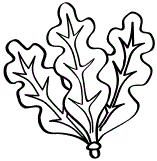 |
Created: 8 May
1941
Military District: V
Early service: coastal duty
To Italy: Jan 1944
Fate: To Russia in early 1945, surrendered in Czechoslovakia |
Garrisoned
the Cannes-Nice sector in France in late summer 1943 when
Italian troops pulled out following the defection. Sent to
Italy in January 1944 after conversion to a motorized
infantry division using makeshift commercial vehicles.
Organized with only four infantry battalions and deficient
in anti-tank, artillery and pioneer units. Served in the Anzio beachhead, and
withdrawn following the fall of Rome. Rebuilt from elements
of Grenadier Regimetn 1028 and Shadow Division Wildflechen,
then back to the front in September 1944. Fought in the
Gothic Line and then transferred to the Adriatic Coast.
Rebuilt once more in February 1945 with three Grenadier
Regiments (two battalions each). sent to the Eastern Front
and surrendered in Czechoslovakia on 2 May 1945. Described
by Ingelheim's postwar account as "on the whole of modest
combat value....below the average of the German infantry
divisions."22 |
|
|
5th Mountain
Division
5.
Gebirgs Division |
Main Combat
Units
|
Type |
Designations |
Notes |
|
Mountain Troop Regiment |
85, 100 |
|
|
Mountain Artillery
Regiment |
95 |
|
|
Mountain Bicycle
Battalion |
95 |
(1940-41) Transferred to
3 Mtn Div Feb 1942 |
|
Reconnaissance Battalion |
85 |
Created Jan 44 from
reorg of Schnell Battalion |
|
Mountain
Pioneer Battalion |
95 |
|
|
Mountain Anti-Tank
Battalion |
95 |
(1940-41) Transferred to
3 Mtn Div Feb 1942 |
|
Schnell Battalion |
95 |
Created March 1943 |
|
Anti-tank Battalion |
85 |
Created Dec 43 from
reorg of Schnell Battalion |
|

The divisional sign was a
chamois (A European goat-antelope) astride three mountain
peaks. |
Created: 25
October 1940 at Salzburg
Military District: XVIII
Early service: Greece, Crete, Russia
To Italy: Nov 1943
Fate: Surrendered near Turin to the Americans in May 1945 |
Created
October 1940 in the Salzburg area, using Gebirgsjäger
Regiment 100 formerly of the 1st Mountain Division and the
85th Infantry Regiment, which came from 10th Infantry
Division when it converted to a motorized infantry division.
Served in the Greek Campaign in April 1941, striking from
Bulgaria into the Metaxas Line. Action on Crete followed,
along with garrison duty there and a return to Salzburg for
reorganization. Went to Army Group North in March 1942. In
March 1943 the division received a schnell battalion which
was split into separate anti-tank and reconnaissance
battalions in December 1943 and January 1944. Transferred to
northern Italy in November 1943 and defensive fighting at
Monte Mare, Monte Croce and Monte Cassino. Heavy fighting at
Cassino and transfer to the Adriatic in May 1944, more
combat in Lombardy. Moved to the western Alps in October
1944, and surrendered near Turin in May 1945 to the
Americans. Von Ingelheim felt that "despite having the best
equipment, only a moderately average combat value."22 |
 |
|
8th
Mountain Division
8.
Gebirgsjäger Division |
Main Combat
Units
|
Type |
Designations |
Notes |
|
Mountain Troop Regiment |
296, 297 |
|
|
Mountain Artillery Regiment |
1057 |
|
|
Mountain Pioneer
Battalion |
1057 |
divisional engineers |
|
Anti-tank Battalion |
1057 |
|
|
 |
Created: Feb
1945
Military District: VII
Early service: as 157th Mountain Division
To Italy: created in Italy
Fate: surrendered to Americans near Trento |
Plans to
create an 8th Mountain Division in Lapland in March 1944
were never realized. In February 1945, the 157th Mountain
Division was redesignated to become 8th Mountain Division.
|
|
|
42nd
Light Infantry
Division
42.
Jäger Division |
Main Combat
Units
|
Type |
Designations |
Notes |
|
Jäger Regiment |
25, 40 |
|
|
Artillery Regiment |
142 |
|
|
Reconnaissance Battalion |
142 |
|
|
Pioneer
Battalion |
142 |
divisional engineers |
|
Anti-tank Battalion |
142 |
|
|
 |
Created: 22
December 1943
Military District: XVII
Early service: Croatia
To Italy: June 1944
Fate: surrendered to British at Belluno |
Created in
Croatia from the 187th Replacement Division in December
1943. Moved to northern Italy in June 1944, served on
coastal defence on the Ligurian Coast and at La Spezia.
Moved to Bologna in November 1944, and remnants retreated
over the Po River in April 1945. Division surrendered to the
British at Belluno. |
|
|
114th Light Infantry
Division
114.
Jäger Division |
Main Combat
Units
|
Type |
Designations |
Notes |
|
Jäger Regiment |
721, 741 |
|
|
Artillery Regiment |
661 |
|
|
Reconnaissance Company |
114 |
Bicycle company
converted to reconnaissance company on renaming of
division on 1 Apr 1943. Expanded to four companies
on 2 May 1944. |
|
Pioneer
Battalion |
114 |
divisional engineers |
|
Anti-tank Battalion |
114 |
|
|
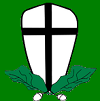 |
Created: 1 Apr
1943
Military District: I
Early service: Yugoslavia as 114 Inf Div
To Italy: Feb 1944
Fate: Surrendered to Americans near Brescia. |
Created on 1
May 1941 as 114th Infantry Division and deployed to
Yugoslavia for anti-partisan duties. On 1 April 1943
reclassified as 114. Jäger Division. Deployed to
Anzio-Nettuno in February 1944. Described by von Ingelheim
as weak and of only average combat value, had little
experience of front-line combat and troops tended to be from
older age classes.22 |
|
|
157th
Mountain
Division
157.
Gebirgsjäger Division |
Main Combat
Units
|
Type |
Designations |
Notes |
|
Mountain Troop Regiment |
296, 297 |
|
|
Mountain Artillery Regiment |
1057 |
|
|
Mountain Pioneer
Battalion |
1057 |
divisional engineers |
|
Anti-tank Battalion |
1057 |
|
|
 |
Created: 1
September 1944
Military District: VII
Early service: as 157th Infantry Division
To Italy: formed in Italy
Fate: renamed 8th Mountain Division Feb 1945 |
Redesignation
and classification of the 157th Reserve Infantry Division as
157th Mountain Division. |
|
|
188th
Mountain
Division
188.
Gebirgsjäger Division |
Main Combat
Units
|
Type |
Designations |
Notes |
|
Mountain Troop Regiment |
901, 902, 903, 904 |
Originally Reserve
Mountain Regiments 136 , 137, 138, 139 |
|
Mountain Artillery Regiment |
1088 |
|
|
Mountain Pioneer
Battalion |
1088 |
divisional engineers |
|
 |
Created: 1 March
1944
Military District: XVIII
Early service: none
To Italy: created in Italy
Fate: Surrendered in Yugoslavia in 1945 |
Redesignation
of the 188th Reserve Mountain Division as a field division.
Served in northern Italy and from August 1944 to the end of
the war on the Adriatic coast and the Istrian peninsula. |
|
|
16th Panzer Division
16.
Panzer Division |
Main Combat
Units
|
Type |
Designations |
Notes |
|
Panzer Regiment |
2 |
|
|
Panzer Grenadier Regiment
|
64, 79 |
|
|
Panzer Artillery Regiment |
16 |
|
|
Army FlaK Artillery
Battalion |
274 |
|
|
Armoured Reconnaissance Battalion |
16 |
|
|
Panzer Pioneer
Battalion |
16 |
divisional engineers |
|
Anti-tank Battalion |
16 |
|
|
 |
Created:
converted to armour 1 Nov 1940
Military District: VI
Early service: Balkans, Russia, destroyed at Stalingrad
Recreated: Early 1943
To Italy: May 1943
Fate: Returned to Eastern Front in October 1943. |
Originally
established as 16th Infantry Division, converted to armour
in November 1940. Served in Romania as an instructional
unit, participated in suppression of an uprising and in
spring 1941 moved to Bulgaria. In reserve during the Balkan
campaign, moved to Silesia and then into Russia in May 1941.
Heavy combat on the Eastern Front and eventually destroyed
at Stalingrad.
The division was recreated in
Brittany,
France and sent to Tuscany, Italy in May 1943. Secured the
Gulf of Taranto in August 1943 following the evacuation of
Sicily. In September 1943 helped disarm elements of the
Italian armed forces following the defection. Rushed to the
Adriatic coast near Termoli and withdrew under enemy
pressure to the Sangro. At the end of November the division
was replaced in the line by the 65th Infantry Division and
returned to the Eastern Front, where it remained for the
rest of the war. The 16th did not receive the PzKpfw V
"Panther" until after it returned to the Eastern Front.24 |
 |
|
26th Panzer Division
26.
Panzer Division |
Main Combat
Units
|
Type |
Designations |
Notes |
|
Panzer Regiment |
26 |
|
|
Panzer Grenadier Regiment
|
9, 67 |
|
|
Panzer Artillery Regiment |
93 |
|
|
Army FlaK Artillery
Battalion |
304 |
|
|
Armoured Reconnaissance Battalion |
26 |
Originally Motorcycle
Battalion 26, redesignated as armoured recon in
April 1943. |
|
Panzer Pioneer
Battalion |
93 |
divisional engineers |
|
Anti-tank Battalion |
51 |
|
|
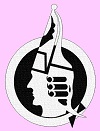 |
Created: 14
September 1942
Military District: III
Early service: coastal duties France
To Italy: June 1943
Fate: Surrendered to British troops at Bologna in May 1945 |
Originally
established as 23rd Infantry Division, converted to armour
in Belgium in September 1942. Used as training formation and
for coastal duties near Amiens, France. The Panzergrenadier
Regiments were originally set up subordinate to the 26th
Panzergrenadier Brigade, but the latter was disbanded in
November 1942.
The division moved to Italy in
June 1943, served at Salerno and Cassino, followed by
Anzio-Nettuno, Orsogna, Rimini, Ravenna and Bologna.
Continually reinforced, in June 1944 received troops from
Grenadier Brigade (motorized) 1027 and in November 1944
received drafts from the 20th Luftwaffe Field Division.
The 1st Battalion of the 26th
Panzer Regiment re-equipped with Panther tanks, but never
served in Italy, instead going to the 25th Panzer Division
in Russia and later to the Grossdeutschland Division and the
Brandenburg Division, being renamed along the way. In its
place, the 1st Battalion of Panzer Regiment 4 was attached
to Panzer Regiment 26 in Italy, and in April 1945 was
officially renamed to finally become the official 1st
Battalion of Panzer Regiment 26.24
The Division capitulated in May 1945 to the British
and was described by
von Ingelheim as "one of the best German divisions in the
Italian theatre of war. Despite heavy losses the division
maintained high morale and was always well led."22
|
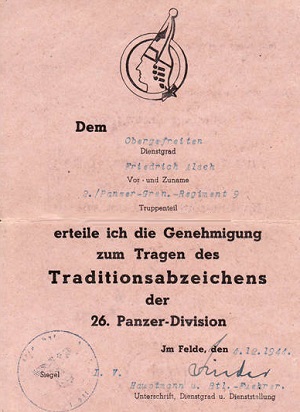 |
|
3rd
Panzergrenadier Division
3.
Panzergrenadier Division |
Main Combat
Units
|
Type |
Designations |
Notes |
|
Panzer Grenadier Regiment
|
8, 29 |
8 Pz Gren Regt was named
Grenadier Regiment until 1 Dec 1944, due to another
regiment in the 8th Panzer Division having the name
8 Pz Gren Rgt until it was renamed Pz Gren Rgt 98.
|
|
Panzer Battalion |
103 |
|
|
Artillery Regiment |
3 (motorized) |
|
|
Armoured Reconnaissance Battalion |
103 |
|
|
Pioneer
Battalion |
3
(motorized) |
divisional engineers |
|
Anti-tank Battalion |
3 |
|
|
 |
Created: October
1934
Military District: III
Early service: as infantry division in Poland. France, and
Russia. Destroyed at Stalingrad.
Recreated: 1 March 1943 as 3rd Infantry Division
(motorized).
To Italy: Jun 1943
Fate: Moved to France in August 1944 and fought in France
and Germany to war's end. |
Participation as infantry division in the Polish and French
campaign. In the fall of 1940, converted to motorized
division, and served as 3rd Motorized Infantry Division in Russia.
Destroyed at Stalingrad. Reorganized in SW France in the spring
of 1943 as 3rd Motorized Infantry Division and renamed in
May/June 1943 as 3rd Panzergrenadier Division. Went to Italy in
June
1943 and into action at Salerno in September. Retreated
across the Volturno and was in reserve at Monte Cassino in
December. Went into action at Aprilia and Cisterna following
the Anzio landings. Transferred to Florence after the fall
of Rome in June 1944, and transferred to France.25
According to von Ingelheim the "division never advanced beyond average in terms
of combat value."22 |
 |
|
15th
Panzergrenadier Division
15.
Panzergrenadier Division |
Main Combat
Units
|
Type |
Designations |
Notes |
|
Panzer Grenadier Regiment
|
104, 115, 129 |
|
|
Panzer Battalion |
215 |
|
|
Artillery Regiment |
33 |
|
|
Army FlaK Artillery
Battalion |
315 |
|
|
Armoured Reconnaissance Battalion |
115 |
|
|
Pioneer
Battalion |
33 |
divisional engineers |
|
Anti-tank Battalion |
33 |
|
|

The division
originally used a three pointed star as a divisional sign,
but beginning on Sicily adopted a five-pointed star that was
easier to apply. |
Created: 6 July
1943
Military District: XII
Early service: France, Africa, destroyed at Tunis.
To Italy: created in Italy Jun/Jul 1943
Fate: Surrendered 1945 |
Originally 33nd
Infantry Division, served as such in the French Campaign.
Autumn 1940 converted to the 15th Panzer Division. Served in
Africa from the spring of 1941 to May 1943 and was wiped out
there.
The remnants of 15 Panzer Division were resurrected as the
Sizilien Division, and renamed 15th Panzergrenadier
Division.
Panzergrenadier Regiments 104, 115 and 129 were among those
units formed on
Sicily in July 1943. PzGren Rgt 115 fought at Cassino and
was dissolved in February 1944, its personnel went to
Panzergrenadier Regiment 129. In April 1944 PzGren Regiment
129 was renamed Panzergrenadier Regiment 115.
The division saw heavy fighting
to the end of the Italian Campaign and according to von
Ingelheim, "despite heavy losses was always a good
division."22 |
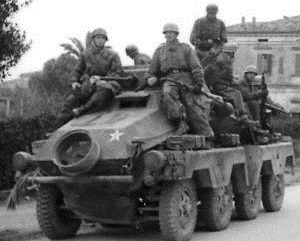 |
|
29th
Panzergrenadier Division
29.
Panzergrenadier Division |
Main Combat
Units
|
Type |
Designations |
Notes |
|
Panzer Grenadier Regiment
|
15, 71 |
|
|
Panzer Battalion |
29 |
|
|
Artillery Regiment |
29 |
|
|
Army FlaK Artillery
Battalion |
29 |
|
|
Armoured Reconnaissance Battalion |
129 |
|
|
Pioneer
Battalion |
29 |
divisional engineers |
|
Anti-tank Battalion |
29 |
|
|
The 29th
Infantry Division used a falcon as the divisional sign, and
the division became known as the Falke (Falcon)
Division. |
Military District:
IX
Early service: Poland, France and Russia as 29th Infantry
Division. Destroyed at Stalingrad.
Recreated: Mar 1943 and renamed in June.
To Italy: July 1943
Fate: Destroyed at the Po April 1945. |
Created on 23
June 1943 by reorganization of the 29th Infantry Division.
The 29th Infantry Division was
crated before the war in Erfurt, and in 1937 became the 29th
Infantry Division (Motorized). The division mobilized and
saw action in Poland and France. The division went into
Russia with Panzer Group 2, fought at Minsk, Smolensk and
Bryansk, and in 1942 left Army Group Centre for Army Group
South, with whom it was destroyed at Stalingrad.
The division was reorganized in SW France in the
spring of 1943, and was designated a Panzergrenadier
Division in the summer. Moved to Sicily in
June 1943, served there and then as a rearguard on the Italian mainland.
Fought in defensive battles and at Anzio, and in the last
month of the war was trapped by the 8th Army between the Po
and the Apennine mountains where it disintegrated. According
to von Ingelheim, "one of the best German divisions in the Italian theater of
war."22 |
 |
|
90th
Panzergrenadier Division
90.
Panzergrenadier Division |
Main Combat
Units
|
Type |
Designations |
Notes |
|
Panzer Grenadier Regiment
|
200, 361 |
155 Pz Gren Rgt
originally also on division strength
but disbanded in October 1943 |
|
Panzer Battalion |
190 |
|
|
Artillery Regiment |
190 |
|
|
Armoured Reconnaissance Battalion |
90 |
|
|
Pioneer
Battalion |
29 |
divisional engineers |
|
Anti-tank Battalion |
190 |
|
|

From 1943 the
division's insignia depicted the island of Sardinia, where
the division was reorganized. |
Created:
Military District: III
Early service:
To Italy: July 1943
Fate: surrendered to Americans south of Lake Garda. |
The 90th
Light Infantry Division was created in the summer of 1941
for use in Africa, and had a number of similar designations
through its early history. The division moved to Africa in
November 1941 and fought throughout the rest of the
campaign, being destroyed at Tunis in May 1943. The division
was officially disbanded in June.
The Sardinia Division was
created in May 1943 and over the summer was used to recreate
the 90th, now designated a Panzergrenadier Division. In September 1943 transferred to the Italian
mainland. According to von Ingelheim, the division "served as a good Panzergrenadier
Division."22 |
|
|
|
Air
Force Divisions
|
19th
Assault Division
19.
Sturm Division |
Main Combat
Units
|
Type |
Designations |
Notes |
|
Jäger Regiment |
37, 38, 45 |
|
|
Füsilier Battalion |
19 |
|
|
Artillery Regiment |
19 |
|
|
Pioneer
Battalion |
19 |
divisional engineers |
|
Anti-tank Battalion |
19 |
|
|

(19th Grenadier Division) |
|
Created: 1 Mar
1943
Early service: France, Netherlands
To Italy: June 1944
Fate: Disbanded 15 August 1944, recreated in the Army as
19th Volksgrenadier Division and fought in France to the end
of October 1944. |
Originally
created as 19. Luftwaffe Feld Division (19th Air
Force Field Division), and used as garrison troops. Later
converted to Static Division, and employed on coastal duty.
On 1 June 1944 the division was redesignated 19th Assault
Division and sent to Italy. Used for coastal duty in Liguria
originally, and after the fall of Rome thrown into rearguard
battles. In four weeks of combat the division was destroyed
and the remnants withdrawn to Viareggio where the division
disbanded and survivors dispersed to other formations as far
away as Denmark. |
|
|
Parachute
Panzer Division
Hermann Goering
Fallschirm- Panzer Division
Hermann Göring |
Main Combat
Units
|
Type |
Designations |
Notes |
|
Parachute Panzer
Regiment |
HG |
|
|
Parachute
Panzergrenadier Regiment |
HG1, HG2 |
|
|
Parachute Artillery Regiment |
HG |
|
|
FlaK Regiment |
HG |
|
|
Parachute Armoured Reconnaissance Battalion |
HG |
|
|
Parachute Armoured Pioneer
Battalion |
HG |
divisional engineers |
|
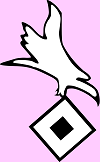 |
Created:
redesignated July 1943
Early service: as infantry in Russia, and motorized infantry
in North Africa.
To Italy: reorganized in Italy
Fate: to Russian front and eventual expansion to panzer
corps, bulk surrendered to Russian troops in May 1945. |
As described
above, various units were formed to create first Regiment
General Göring, then Brigade General Göring. This formation
saw action in Russia in the summer and autumn of 1941. In
November 1942 the Brigade General Göring was expanded to
become Division General Göring. Elements of the
division assembled in Italy, and then moved to North Africa
where about 11,000 officers and men surrendered in May 1943.
The Panzer Division Hermann
Göring was recreated from new troops and remnants of the
General Göring units. In July 1943 the division was renamed
to become Parachute Panzer Division Hermann Goering. The
Parachute designation of divisional units was notional and
no unit received jump training. The division fought on
Sicily, including action against the American landing beach
at Gela, and then
rearguard for the Axis evacuation through Messina. Helped
disarm Italian units after defection of Italy, saw brief
action at Salerno and then the Gustav Line. Further action
at Cassino and Anzio-Nettuno. Withdrawn in April 1944,
expected to move to southern France, but the Allied offensive in
Italy in May 1944 required it to return to the front. Heavy losses
south of Rome, withdrew to Florence, and in July 1944 left
for the Eastern Front. Division expanded to corps on the
Eastern Front.
The
divisional order of battle followed Army lines, with the
addition of an anti-aircraft regiment, but was hampered by a
lack of combat experienced officers and junior leaders,
gradually offset by the cross-posting of Army troops in
leadership positions. Rated by von Ingelheim as having an
above average combat value. |

The HG Division used a unique
series of "clock face" tactical signs to distinguish units
within the division. |
|
1st
Parachute Division
1.
Fallschirmjäger Division |
Main Combat
Units
|
Type |
Designations |
Notes |
|
Parachute Infantry (FJ) Regiment
|
1, 3, 4 |
|
|
Parachute Artillery Regiment |
1 |
|
|
Parachute FlaK Battalion |
1 |
|
|
Parachute Pioneer
Battalion |
1 |
divisional engineers |
|
Parachute Anti-tank Battalion |
1 |
|
|
 |
Created:
1 Sep 1938 (as 7. Flieger Div)Reorganized: 1 May 1943
Early Service: Poland, Norway, Denmark, Netherlands, Greece,
Crete, Russia.
To Italy: July 1943
Fate: surrendered in Italy 2 May 1945 |
Created as 7.
Flieger Division in 1938 to control all parachute units. By
1939 these numbered two regiments. Fought in Poland in
company-sized detachments, most missions were scrubbed when
fast moving German forces overran the drop zones. Played a
vital role in Norway and Denmark, and later the invasion of
the Netherlands. After the Western Campaign the division
expanded to four regiments. The division fought again in
Greece in 1941. The largest German airborne operation took
place on Crete in May. Heavy losses led to the division not
being employed at the start of the Russian Campaign.
Elements of the division fought in various combat groups in
September 1941 and in 1942 on anti-partisan duties. One
brigade went to North Africa. On 1 May 1943 the division was
reorganized, its scattered elements united in France, and
renamed 1. Fallschirmjäger Division. The new division had a
strong cadre as well as new volunteers. Elements served on
Sicily in July 1943, and the division was used steadily in
defensive operations, notably at Ortona and later at
Anzio-Nettuno and the Gothic/Green Line. According to von
Ingelheim, “showed the highest morale and one of the best
German fighting divisions.”22 |
|
|
2nd
Parachute Division
2.
Fallschirmjäger Division |
Main Combat
Units
|
Type |
Designations |
Notes |
|
Parachute Infantry (FJ) Regiment
|
2, 6, 7 |
|
|
Parachute Artillery Regiment |
2 |
|
|
Parachute FlaK Battalion |
2 |
Created after Div left
Italy |
|
Parachute Pioneer
Battalion |
2 |
divisional engineers |
|
Parachute Anti-tank Battalion |
2 |
|
|
|
Created: Feb
1943
Early service: none
To Italy: Sep 1943
Fate: moved to Eastern Front in Nov 1943. |
Created in
February 1943, moved to Italy at time of defection, and
fought in Rome and the Reinhard Line. Moved to the Eastern
Front in November 1943. |
|
|
4th
Parachute Division
4.
Fallschirmjäger Division |
Main Combat
Units
|
Type |
Designations |
Notes |
|
Parachute Infantry (FJ) Regiment
|
10,11, 12 |
|
|
Parachute Artillery Regiment |
4 |
|
|
Parachute FlaK Battalion |
4 |
|
|
Parachute Pioneer
Battalion |
4 |
divisional engineers |
|
Parachute Anti-tank Battalion |
4 |
|
|
 |
Created: Nov
1943
Early service: none
To Italy: created in Italy
Fate: surrendered in Italy April 1945 |
Created in
November 1943 from elements of the 2nd Parachute Division,
volunteers from Italian airborne units, and various
paratroop replacement units in Italy. First saw action at
Anzio-Nettuno, then rear guard actions south of Rome, among
the last units to leave the city, withdrawal battles, and
action at Futa Pass and the Gothic/Green Line. Sent cadre to
Austria in March 1945 to created 10th Parachute Division,
fought at Rimini and Bologna before surrendering to the
Allies in April 1945. According to Ingelheim, “better than
average combat value.”22 |
|
|
Waffen-SS Divisions
|
16th Panzer
Grenadier Division
"Reichsführer SS"
16. SS-Panzergrenadier Division
"Reichsführer SS" |
Main Combat
Units
|
Type |
Designations |
Notes |
|
SS Panzer Grenadier Regiment
|
35, 36 |
|
|
SS Panzer Battalion |
16 |
|
|
SS Artillery Regiment |
16 |
|
|
SS Assault Gun Battalion |
16 |
|
|
SS FlaK Battalion |
16 |
|
|
SS Armoured Reconnaissance Battalion |
16 |
|
|
Pioneer
Battalion |
16 |
divisional engineers |
|
 |
Created:
Expanded
Early service: Corsica, Yugoslavia
To Italy: Winter 1943/44
Fate: Left Italy in April 1944, to Austria, then Hungary.
Surrendered to Russians in Austria in April 1945. |
The motorized
Escort Battalion "Reichsführer SS" was expanded in February
1943 to brigade strength (consisting of a Grenadier
Battalion, Anti-Tank detachment, assault gun detachment, and
anti-aircraft battalion). The Assault Brigade "Reichsführer
SS" expanded to Panzergrenadier Division "Reichsführer SS"
in September 1943. Served
on Corsica and later moved to Italy. Elements served
on anti-partisan duty around Ljubljana. Two battalions
fought on the Anzio-Nettuno front in February 1944.
According to von Ingelheim: "despite
quality manpower, average officers and NCOs resulted in the
division receiving insufficient training. Never more than
"average" combat value."22 |
|
|
|
Additional Support
A number of additional units supported the
German divisions in the field, including assault gun battalions
(reorganized as assault gun brigades in early 1944), heavy tank
battalions (equipped with the PzKpfw VI "Tiger" tank), and various heavy
artillery types used at corps and army level, including Nebelwerfer
rocket batteries, and, famously at Anzio, rail guns. None of these
existed on the regular establishment of the divisions. Over 190 of the
PzKpfw VI ausf E "Tiger" tank were sent to Italy during the Second
World War, with 165 of them seeing combat.26 The Tiger units
also deployed with a number of remote control demolition devices.
The divisional organizations were somewhat
flexible, however, in that the Germans excelled at the use of Battle
Groups (Kampfgruppen), where disparate elements of various
formations might be brought together under a single headquarters. This
was sometimes done when units were cut up into remnants, but the method
was also employed to place full-strength units under a single commander.
For example, the 65th Infantry Division fought at Anzio as Battle Group
Pfeifer, with component units of other divisions under command and
fighting alongside the 65th's component elements.
|
504th Heavy
Tank Battalion
504.
Schwere-Panzer-Abteilung |
Intended for service in Tunisia,
the 2nd Company of this battalion was stranded in Italy
after the fall of Tunis. Following Allied landings on
Sicily, they fought there with 17 tanks. The company was
plagued by poor communication and cooperation with the
Hermann Goering Panzer Division to whom it was subordinated,
and a number of Tigers were lost through the HG's inability
to recover and repair them. After ten days of fighting only
two Tigers remained. Reinforced by a third, they joined the
HG's panzer regiment and only a single Tiger remained by the
time Axis forces had retreated through the straits of
Messina to the mainland.
The battalion was recreated
in November 1943 in the Netherlands, and went to Italy in
June 1944. Additionally, an eight-tank group formed from
instructional and training units, named Tiger Company Meyer,
was formed in the summer of 1943 and sent to the Brenner
Pass. They served under various high level headquarters and
only saw action after the landings at Anzio-Nettuno. From 27
January to 1 March 1944 the Tigers fought independently at
Anzio, and were absorbed by the 508th Heavy Tank Battalion
thereafter.
By 23 July 1944, after
defensive battles north of Rome, one company of the 504th
had lost all its Tigers. More action for the 504th followed
in August and September and by October the Tigers were being
parcelled out in small groups to stabilize different areas
of the front. In February 1945, the battalion absorbed the
remnants of the 508th Heavy Tank Battalion and went into
reserve east of Bologna. On 21 April the remaining eight
operational Tigers broke out of an Allied encirclement, but
unable to cross the Senio River, the last German Tigers in
Italy were destroyed by their crews to prevent their
capture. |
 |
|
508th Heavy
Tank Battalion
508.
Schwere-Panzer-Abteilung |
The 508th Heavy Tank Battalion
entered action in Italy in February 1944 with 45 Tigers. The
battalion operated at Anzio until late May when the
surviving vehicles withdrew to Rome for repairs. Further
defensive battles followed in June. At the start of July only
23 Tigers were available for action. The company was by this
time operating in small groups, diminishing their combat
effectiveness. Further combat at Bologna and Florence
followed. In February 1945 the remaining 15 Tigers were
absorbed by the 504th Heavy Tank Battalion, and the crews
sent to Paderborn to train on the Königstiger tank. |
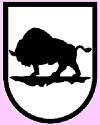 |
Combat Power of German Forces in Italy
Ludwig Graf von Ingelheim, who served on
the General Staff of the German Army throughout the war, analyzed and
compared the German forces in Italy with their Allied counterparts and
came to some interesting conclusions.
Ingelheim identifies 22
divisions which bore the brunt of the Italian Campaign. Among them, six
had previously been shattered at Stalingrad (3rd Panzergrenadier, 29th
Panzergrenadier, 44th, 71st, 94th and 305th Infantry), four had been
destroyed at Tunis (Hermann Göring Panzer Division, 15th Panzergrenadier,
90th Panzergrenadier, 334th Infantry), and six were only newly created
in 1943 (16th SS Panzergrenadier, 1st Parachute, 4th Parachute, 278th,
356th and 362nd Infantry).
Ingelheim identified just
three divisions serving in Italy as elite - 1st Parachute, 26th Panzer
Division, 29th Panzergrenadier Division. He also felt that as the German
divisions were reorganized (for example from Type 1939 to Type 1944),
their authorized manpower was scaled back, causing disadvantages when
facing Allied formations. In addition to manpower shortages, German
forces were chronically short of fuel. He offers the following insights:
What
did the reorganization of the infantry divisions look like?
-
The infantry
Division Type 1939 had a strength of about 16,000 men. Their
essential feature was 3 infantry regiments of 3 battalions each. If
you are forced to maintain Infantry Divisions, then you also have to
stick to this triangular infantry structure, which has been proven in two world
wars.
-
The Infantry
Division Type 1944 was already reduced to about 12,500 men, the
infantry regiments had only 2 battalions each, making, a reserve formation in
combat impossible because the means of employing a Type 44 division remained the same as
with a Type 1939 division. Fighting became more and more difficult.
-
The
Volksgrenadier Division was further reduced in strength to about
10,000 men. The statement made in b) applies to an increasing
extent, especially since now also the Fusilier Battalion (the only
divisional reserve) was reduced to a single Fusilier Company. This type was
however from 1944 the standard type for all infantry formations. The
division's artillery lost a light 10.5cm howitzer battalion and received a
7.5cm anti-tank battalion in its place. However, this type of division was
better motorized and equipped with more anti-tank and automatic
weapons than the Type 1939 and 1944 divisions. However, the army
armament, or industry could not meet the demand at this time by far.
The whole conversion into divisions of the type "Volksgrenadierdivision"
remained piecemeal and was as such a serious disadvantage for the
infantry.27
By comparison, the Allies had a number of
other advantages. Artillery was both better and more plentiful in Allied
divisions. Infantry divisions had nine infantry battalions compared to
just six in the German divisions (with the advantage of being able to
spell off battalions and/or use them in reserve more often). Allied
infantry divisions were often supported by the assignment of independent
tank brigades or battalions. Allied units suffered no fuel shortages,
and had sufficient mechanical transport for both supplies and
redeploying troops. By contrast German formations were horse-drawn. The
Allies also enjoyed air superiority, and were able to hinder German
movements behind the lines.
During the war, the U.S. 5th Army published an intelligence summary that
characterized their German opponents, as reported in the U.S. Army's
official history:
There was a tendency in some quarters
to downgrade the German opposition. For example, one intelligence
report made much of the 'remarkable background' of the divisions in
the Tenth Army - the 44th, 94th, and 305th remade after Stalingrad,
the 15th Panzer Grenadier and Hermann Goering reconstituted after
Tunisia, the 3d Panzer Grenadier, renumbered but the same mediocre
386th, the 29th Panzer Grenadier, a milking of the 345th, the 1st
Parachute drawn from the 7th, the 26th Panzer from the 23d Infantry
- 'Only [the] 65[th] is an original invention, and it may hardly be
regarded as a success.'28
Martin Blumenson, the Army's historian,
added immediately after these lines that despite what the 5th Army
thought of the German divisions, they 'fought resourcefully and well."
Comparative Strengths
Von Ingelheim's treatise included
comparisons of opposing forces in Italy as follows:
|
Date/Place |
Ratio Allied:German Divs |
German Armoured Divisions |
Allied Armoured Divisions |
German Infantry Divisions |
Allied Infantry Divisions |
|
9 Sep 1943
Italy |
17:8 |
Von Ingelheim's
figures of 17:8 are similar to John Ellis' (see below). |
15 Nov 1943
Gustav Line |
11:10 |
Hermann Göring
26th Panzer |
U.S. 7th Armored |
1st Parachute
3rd Panzergrenadier
15th Panzergrenadier
29th Panzergreandier
65th Infantry
94th Infantry
305th Infantry
334th Infantry |
1st Canadian Infantry
U.S. 3rd Infantry
5th Infantry (British)
8th Indian Infantry
U.S. 34th Infantry
U.S. 45th Infantry
46th Infantry (British)
56th Infantry (British)
78th Infantry (British)
U.S. 82nd Airborne |
15 Jan 1944
Gustav Line |
16:10 |
Hermann Göring
26th Panzer |
U.S. 1st Armored
5th Canadian Armoured
U.S. 7th Armored |
1st Parachute
3rd Panzergrenadier
5th Mountain
15th Panzergrenadier
44th Infantry
94th Infantry
305th Infantry
334th Infantry |
1st Canadian Infantry
2nd New Zealand Infantry
U.S. 3rd Infantry
5th Infantry (British)
8th Indian Infantry
U.S. 34th Infantry
U.S. 36th Infantry
U.S. 45th Infantry
46th Infantry (British)
56th Infantry (British)
78th Infantry (British)
U.S. 82nd Airborne |
May 1944
Italy |
25:16 |
9 in Gustav Line
5 at Anzio-Nettuno
2 in reserve |
8 U.S.
4 Free French
10 British and Dominion
2 Polish
1 Italian |
Von Ingelheim pointed out that the clearly
growing superiority of Allied forces was even greater than just the
number of divisions, as most German divisions had only six infantry
battalions to the nine in a standard British or American infantry
division. His final conclusion was "It
should be noted that, in addition to the overwhelming air superiority of
the Allies, Allied divisions were almost always superior to German
troops by twice their strength and equipment. Every passing month of the
war continued to worsen the situation of the German troops in Italy, and
the situation of the Allies became more favourable."29
Historian John Ellis has pointed out that
despite the protests of Allied commanders (and some historians) that
insisted the war in Italy was run by the Allied supreme command on a
shoestring, "Allied superiority in tanks, guns and aircraft was
overwhelming."30 In September 1943, in addition to the ratio
of divisions shown in the first line of the table above, the Allies had
1,053 medium tanks in Italy and over 1,900 by May 1944, peaking in
October 1944 with over 3,000. Even reducing the figures by a quarter to
account for vehicles not in service (due to damage, destruction or other
maintenance), the Germans were severely disadvantaged. At Salerno in
September 1943 the 16th Panzer Division had 100 tanks, which were
whittled down in just six days of fighting to 22. Less than a month
later, the entire 10th Army in southern Italy fielded only 149 tanks and
122 assault guns. By the end of November, the Allies had 2,000 tanks in
Italy against 229 German tanks and 173 assault guns. By April 1944 the
ratio of Allied tanks to German was about 10 to 1. Disparities of
artillery and air power were similarly overwhelming .30
John Ellis provides a different analysis in
his book Brute Force. For example he cites 13 Allied divisions
versus 7 German divisions in September 1943. Note that Ellis has figures
for both divisions deployed to the front, and those occupied in garrison
and occupation duty). In fact, the only parity the Germans *were* able
to achieve, according to Ellis, was in the number of divisions, as many
Allied formations were stripped from the Italian theatre for the
invasions of France in Normandy in June 1944 and southern France in
August 1944.

Conclusion
Both Allied and German historians talk about
the hardships of the Italian Campaign and the belief among the troops on
both sides that they were relegated to a backwater of the war. For the
Allies, it was a brutal slog through unforgiving terrain, a battle of
attrition akin to the Western Front of the First World War. For the
Germans, a feeling that they were deluged by air and artillery power
deployed tenfold or more their own numbers. What is relatively clear
today is the human cost: 312,000 wounded, killed and captured Allied
soldiers, against 435,000 German casualties. Losses among the civil
population were also high, as often from bombs and shells of their
Allied liberators as from the brutality of occupying German forces who
used reprisals as one of the tools in the bitter partisan fighting that
threatened their zone of communication.31
|
|
Notes
-
Cooper, Matthew The German Army
1933-1945: Its Political and Military Failure (Stein
& Day Publishers, New York, NY, 1978) ISBN 0-8128-2468-7 p.399
-
Ibid p.403
-
Ibid, p.401
-
Ibid p.406
-
Zaloga, Steven J. Anzio 1944:
The Beleaguered Beachhead (Osprey Publishing Ltd.,
Botley, Oxford, UK, 2005) ISBN 1-84176-913-4 p.57
-
Cooper, Ibid, p.406
-
Thomas, Nigel & Stephen Andrew
The German Army 1939-45 (5): Western Front 1943-45
(Osprey Publishing Ltd., Botley, Oxford, UK, 2000) ISBN
1-85532-797-X pp.16-17
-
Cooper, Ibid, p.403
-
Ibid, p.406
-
Jurado, Carlos Caballero
Resistance Warfare: 1940-45 (Osprey Publishing, Botley,
Oxford, UK, 2005) ISBN 0-85045-938-X pp.24-39
-
Thomas, Ibid, pp.6-7
-
Ibid, p.7
-
Ibid
-
Niehorster, Lee German Army
Panzer and Panzergrenadier Divisions 1943-1944 (Enola
Games, Brooklyn, NY, 1982) p.19
-
Battistelli, Pier Paolo Panzer
Divisions 1944-45 (Osprey Publishing, Botley, Oxford,
UK, 2009) ISBN 978-1-84603-406-0 p.15
-
Windrow, Martin Luftwaffe
Airborne and Field Units (Osprey Publishing, Botley,
Oxford, UK, 2001) ISBN 085045-114-0 pp.3-28
-
Williamson, Gordon The Waffen
SS (1): 1. to 5. Divisions (Osprey Publishing, Botley,
Oxford, UK, 2003) ISBN 1-84176-589-9 p.3
-
Windrow, Martin Waffen SS
(Osprey Publishing, Botley, Oxford, UK, 1973) ISBN 0-88254-169-2
p.20
-
Bishop, Chris Hitler's Foreign
Divisions: Foreign Volunteers in the Waffen SS 1940-1945
(Amber Books Ltd, London, UK, 2005) ISBN 1-904687-37-7 pp.45, 1177
-
Windrow, Martin The Waffen SS
(Revised Edition) (Osprey Publishing, Botley, Oxford,
UK, 1989) ISBN 0-85045-425-5 p.24
-
Williamson, Gordon German Army
Elite Units 1939-45 (Osprey Publishing, Botley, Oxford,
UK, 2002) ISBN 1-84176-405-1 p.19
-
Von Ingelheim, Ludwig Graf "Die
personelle und materille Lage der deutschen Divisionen in Italien,
verglichen mit der Verhältnissen auf allierter Seite." (October
1947) - National Archives and Records Administration document
MS#D-342. Von Ingelheim served in various staff roles during the
war, including Ia (Operations Officer) of the 54th Army Corps from
August 1941 to February 1943. He ended the war as a colonel of the
General Staff, serving as chief of staff of the German 82nd Army
Corps.
-
Divisional sketch histories were done
with extensive reference to the Lexicon-der-Wehrmacht website
http://www.lexikon-der-wehrmacht.de/
-
Battistelli, Ibid, p.88
-
Bishop, Chris Panergrenadier
Divisions 1939-1945 (Amber Books Ltd, London, UK, 2007)
ISBN 978-1-905704-29-3 pp.16-24
-
Trocja, Waldemar, Karlheinz Münch and
Markus Jaugitz Tigers in Italy 1943-45 (Model
Hobby, Katowice, Poland, 2008) ISBN 978-83-60041-34-5
-
Von Ingelheim, Ibid
-
Blumenson, Martin. United
States Army in World War II – Mediterranean Theater of Operations:
Salerno to Cassino (Center of MIlitary History,
Washington, DC, 1993) p.60
-
Von Ingelheim, Ibid
-
Ellis, John Brute Force: Allied
Strategy & Tactics in the Second World War (Viking, New
York, NY, 1990) no ISBN, p.325
-
Ibid, pp. 318-330
-
Graham, Dominick and Shelford Bidwell
Tug of War: The Battle for Italy, 1943-1945 (St.
Martins Press, New York, NY, 1986) ISBN 0-312-82323-1 pp.18-19
|
|
|

 Background
Background 1942
took control of Morocco and Algeria, surrounding Axis forces in
Tunisia
1942
took control of Morocco and Algeria, surrounding Axis forces in
Tunisia bulk
of German forces were able to retreat to the mainland by 17 August 1943.
bulk
of German forces were able to retreat to the mainland by 17 August 1943.








































































